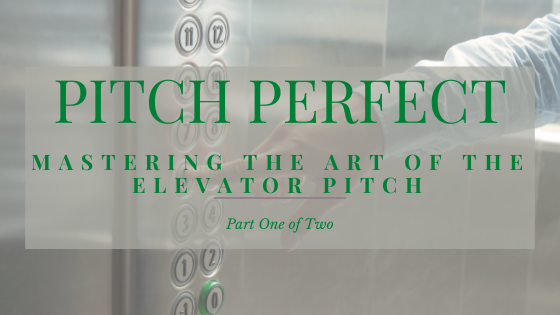Fun fact: The average elevator ride lasts about 118 seconds. Why does this matter? Imagine this scenario…
You step onto an elevator and there, right there just inches away from you, is the CEO you’ve been trying to get in front of for months but could never quite connect with. He will be trapped in that elevator with you for at least a few floors — a captive audience for approximately 118 seconds. Now’s your chance to introduce yourself, tell him about you and your company, and impress the heck out of him to the point he asks for a formal meeting to learn more — all before the elevator doors slide open and your ultimate prospect disappears into an abyss of executive offices.
So what do you say? Wouldn’t it be great if you had a brief, compelling, powerful, and persuasive little speech prepared for moments exactly like this? A pitch you’ve rehearsed and polished to the point that it sounds natural and authentic and shows you’re the expert on whatever it is that you do?
You wouldn’t be the first businessperson to realize that having such a speech in your back pocket would be convenient and, hopefully, highly effective.
Elevator engagement
The idea of the aptly-named elevator pitch, or elevator speech, originated decades ago in Hollywood, where screenwriters were pounced on unsuspecting film executives in elevators to pitch their ideas. Today, though, elevator pitches are less about outright selling and more about engaging your audience and demonstrating your value proposition — and they rarely take place in elevators.
Think about all the places where a prepared and practiced introduction about you and what you do could come in handy, like:
- Professional networking events,
- Conventions and trade shows,
- Your website and social media platforms,
- Your LinkedIn bio or “about” section of other accounts,
- Job interviews and career fairs, and even
- Bars, buffet lines, or at the gas pump!
Basically, you can use your elevator speech wherever and whenever you might possibly have the opportunity to meet someone you’d like to impress or engage.
Pre-pitch prep
Let’s step back into that imaginary elevator. Even though you might have about 118 seconds to deliver your elevator speech, no one wants to hear a stranger drone on about themselves for almost two minutes. As you craft your elevator speech, aim for 20 to 30 seconds instead — and certainly no more than one full minute.
Here are five key things you’ll want to accomplish in those precious 30 seconds:
- Introduce yourself and your company,
- Explain what you do or sell,
- Communicate your unique selling proposition,
- Engage with a question, and
- Close with a call to action.
This may sound like a mouthful, but it’s actually quite possible. But before you start talking to yourself in a mirror (yes, you’ll need to do this eventually), and even before you put pen to paper, you’ll need to think about your goals as well as your audience. Ask yourself these questions:
- What result do I want from this conversation? This could be a sale, an appointment to present a longer presentation or demo, a job interview, etc. It could also be just to plant a seed for a later opportunity, or pique the person’s interest to the point they look you up online.
- Who will I be talking to? Will it be a business owner, executive, board member, human resources representative, or another decision maker? Remember, this could be a person you meet in passing or an audience who finds you online, depending on the purpose of your pitch.
Keep the answers to these questions in your mind as you continue crafting your elevator pitch. It might even be helpful to create a physical representation of this person (even if you’ve never actually seen them) in your mind. Understanding your audience and your goal will help you to come up with the right conversational approach and create an appropriate call to action to close your pitch.
Next, you’ll want to develop the “meat and potatoes” of the conversation. Who you are and what you do, plus what makes you different. Whether you’re selling your own expertise or your company’s product or service, you are the subject matter expert, and that needs to come across clearly in your elevator pitch. Now is your time to shine … but succinctly.
Spend some time thinking about your unique selling proposition, or USP. Your USP is whatever characteristic sets you apart from your competition. It could be related to your level of service, a particular product feature, your location(s), etc. Your USP will also be key to developing the question you’ll pose near the end of your speech.
This prep work may take a while, but it’s necessary to ensure your elevator pitch produces results. Take your time and put real thought into your answers. In our next installment, we’ll put all these pieces together, look at some great elevator pitch examples, and draft your winning pitch!
